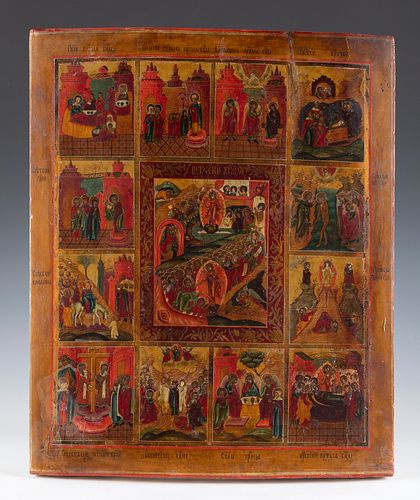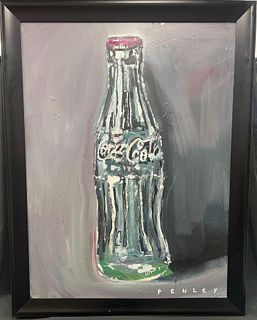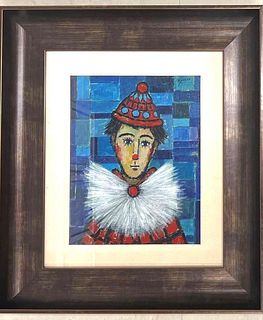Russian school, workshops of the Old Believers, second half of the 17th century. "Resurrection of Christ, Christ's Descent into Hell, and his life in
Lot 91
About Seller
Setdart Auction House
Carrer Aragó 346
Barcelona
Spain
Setdart Subastas was born in 2004 and is currently the first online art auction in Spain with solidity, prestige and reliability guaranteed by our more than 60,000 users. Setdart has a young, dynamic and enterprising team ready to successfully manage the purchase and sale of art works through custom...Read more
Estimate:
EUR€2,000 - EUR€2,500
$2,150.54 - $2,688.17
Absentee vs Live bid
Two ways to bid:
- Leave a max absentee bid and the platform will bid on your behalf up to your maximum bid during the live auction.
- Bid live during the auction and your bids will be submitted real-time to the auctioneer.
Bid Increments
| Price | Bid Increment |
|---|---|
| EUR€0 | EUR€10 |
| EUR€200 | EUR€25 |
| EUR€500 | EUR€50 |
| EUR€1,000 | EUR€100 |
| EUR€3,000 | EUR€200 |
| EUR€5,000 | EUR€500 |
| EUR€10,000 | EUR€1,000 |
| EUR€20,000 | EUR€2,000 |
| EUR€50,000 | EUR€5,000 |
About Auction
By Setdart Auction House
Nov 3, 2021
Set Reminder
2021-11-03 08:00:00
2021-11-03 08:00:00
America/New_York
Bidsquare
Bidsquare : OLD MASTERS
https://www.bidsquare.com/auctions/setdart-auction-house/old-masters-7786
Setdart Auction House sofia@setdart.com
Setdart Auction House sofia@setdart.com
- Lot Description
Russian school, workshops of the Old Believers, second half of the 17th century. "Resurrection of Christ, Christ's Descent into Hell, and his life in 12 hagiographic scenes". Tempera on panel. Measurements: 53 x 44,5 cm. Descent of Christ to hell is one of the most important representations in Christian iconography. This passage was known in Ancient Rus since the XI century, although it obtained maximum popularity in the second half of the XIV century. Iconography of this New Testament passage finally developed in the 17th century in Moscow workshops. In this period, the icon reached its maximum complexity, combining the New and Old Testament passages, and in turn, composing in one the scenes of the resurrection and Christ's descent into hell. The icon of interest, in spite of its relatively simple composition, a central register surrounded by 12 hagiographic scenes, turns out to be very attractive for the symbolism of the symbolic details that accompanies each one of the miniatures. In the central scene, which forms the theme of the icon, one can find representations of the devil and hell, very uncommon in orthodox iconography. The open mouth of the monstrous dragon is the allegory of hell. While the devil is in the lower right corner of the scene, represented as a naked being, with a beard ending in a beak and in profile - the three main features of the devil or sinners in an orthodox icon -. The central scene is framed in a decorative border, imitating wood carving. The twelve scenes around it represent passages of the life of Jesus Christ, from his birth to the resurrection, as well as some passages of Marian character, being the last scene of the shekel, the burial of the Virgin, in the lower left corner. A curious detail of this piece is found in the ninth scene, which represents the Exaltation of the Holy Cross, located in the lower right corner. The inscription "????" is the Cyrillic translation of the Latin phrase "INRI". It is a very unusual inscription on the icons of the Russian Old Believers, since it ended up causing a lot of controversy, regarding the direct citation of Pontius Pilate, Christ's murderer. The fact that it accompanies the cross helps to determine the early date of the creation of this icon, around 1700, when this inscription was still used by Old Believer painters.
- Shipping Info
-
In-house shipping available. Please inquire at admin@setdart.com.
-
- Buyer's Premium



 EUR
EUR CAD
CAD AUD
AUD GBP
GBP MXN
MXN HKD
HKD CNY
CNY MYR
MYR SEK
SEK SGD
SGD CHF
CHF THB
THB


















